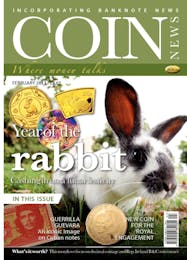Rise or fall?
AS we enter 2011 so the stock market volatility that has marred the past two years is abating somewhat and the “FTSE” is almost back at pre-credit crunch levels. However, this return to “stability” has not been reflected by the commodities market which is still seeing record prices for everything from wheat to copper and of course precious metals. As we go to press the price of gold is hovering around the $1,360 mark and silver around about $29—both down a little from recent highs, but nevertheless still at astonishing levels. To put it into perspective: silver, which has actually gone up more than gold in percentage terms (surging by about 80 per cent in 2010), is now at its highest since 1980. Now admittedly the highs of 30 years ago which saw the metal touch $50 an ounce are unlikely to be repeated (no-one to my knowledge is trying to corner the silver market and, if you factor-in inflation and currency fluctuation, silver would actually need to be at about $135 an ounce to be comparable), but that doesn’t mean these new highs aren’t having some affect. On the one hand this rise is a positive thing—we see the value of our collections increasing almost daily and the dealers are happy because more and more people are turning to coins, etc., as investments, meaning that more money is coming into the hobby and that can’t be bad. Unfortunately there is also a downside— and I don’t mean just the increase in the average price of the coins we collectors have to buy to carry on with our hobby.
Most of us by now know that pre-1947 “silver” coins are worth far more than face value (numismatic interest notwithstanding) and those minted before 1920 are worth even more as they really are pure silver. How many of us have made small profits (or indeed large ones) by buying “job lots” of coins from friends, antique shops, boot sales etc. and sifting through to find those coins with an actual silver content and happily, selling on those which do contain the precious metal to jewellers and melters? More than would be prepared to admit it I think! Now this is all very well. After all, if you have a collection of worn George V sixpences or even shillings where Victoria’s head is barely visible, then unfortunately there is little to be done with them as coins—they really do have to be viewed as lumps of silver and if you can make a bit of money to fund your next “proper” numismatic acquisition then so be it. Unfortunately, though as silver increases in value more and more, people will, I fear, be wise to the idea of apparently common coins being worth something and we will soon find people with no real interest in coins at all doing what we have done for years and searching for the early items just to sell on to be melted. Of course, I would be a hypocrite if I criticised the newcomers for doing what we collectors have been doing for years; we don’t, unfortunately, have the monopoly on old coins (no matter how much I wish we did) and if others are now cashing in then that’s life. What worries me though is those cashing in with no regard whatsoever for the actual numismatic rarity of the coins they are condemning to the pot. Those seeking just to make money on “job lots” are unlikely to bother to really research what they have. They perhaps won’t notice a 1905 shilling amongst an array of those from other years of Edward’s reign and won’t spot a 1944 threepence when there are so many others in the bag; instead they’ll simply check that the date is early enough, throw them all together and take them to their local jeweller or dealer. If we’re lucky, the coins will go to a proper bona fide coin dealer who will have the sense (and the time) to check through them all and save those worth keeping. But we all know that the chances are the bag will be taken to a local jeweller who will know the price of what he is offered but not necessarily the value. From there they will be lost forever, destined to become an ingot to be traded rather than stay a numismatic piece to be treasured.
Back in the late 1970s and early 1980s countless coins (and medals) were lost forever. I hope that such scenes will not be repeated in the “Twentyteens”, but I fear that if the world’s financial state continues as it is then it is not an impossibility. There is little, of course, that any of us can do except try our best to educate those who might otherwise condemn some wonderful rarities to the pot; sadly as I watch the rise of the “we buy gold” companies offering a fraction of the true worth of the pieces they are proffered, I fear that educating the British public on the true value of what they have might be an uphill struggle. Still, if we don’t do it no one else is going to!

Archives
-
2024 (15 articles)
-
2023 (55 articles)
-
2022 (44 articles)
-
2021 (59 articles)
-
2020 (80 articles)
-
2019 (50 articles)
-
2018 (49 articles)
-
2017 (46 articles)
-
2016 (54 articles)
-
2015 (44 articles)
-
2014 (62 articles)
-
2013 (75 articles)
-
2012 (74 articles)
-
2011 (81 articles)
-
2010 (131 articles)
-
2009 (91 articles)
-
2008 (89 articles)
-
2007 (75 articles)
-
2006 (76 articles)
-
2005 (19 articles)
-
2004 (11 articles)
-
2003 (23 articles)
-
2002 (16 articles)
-
2001 (11 articles)









